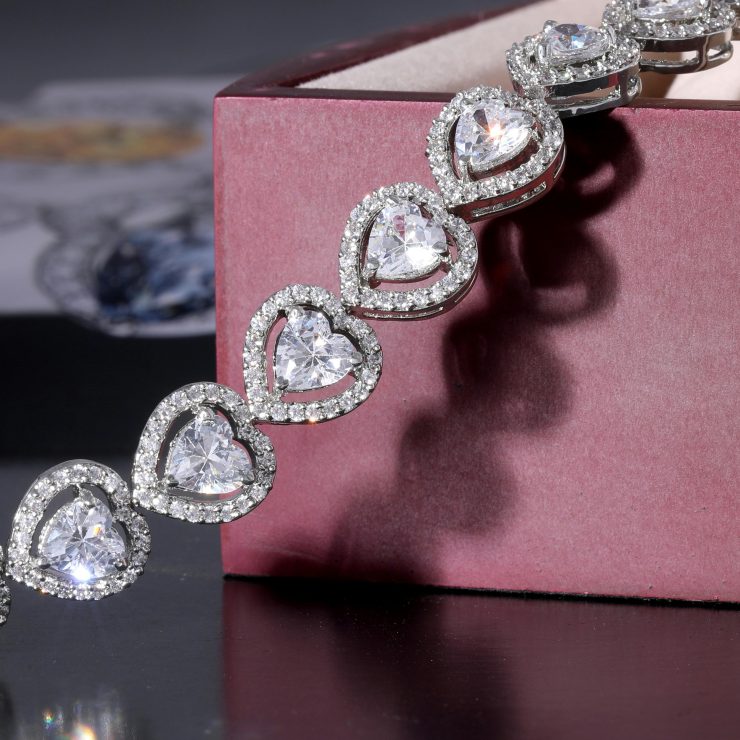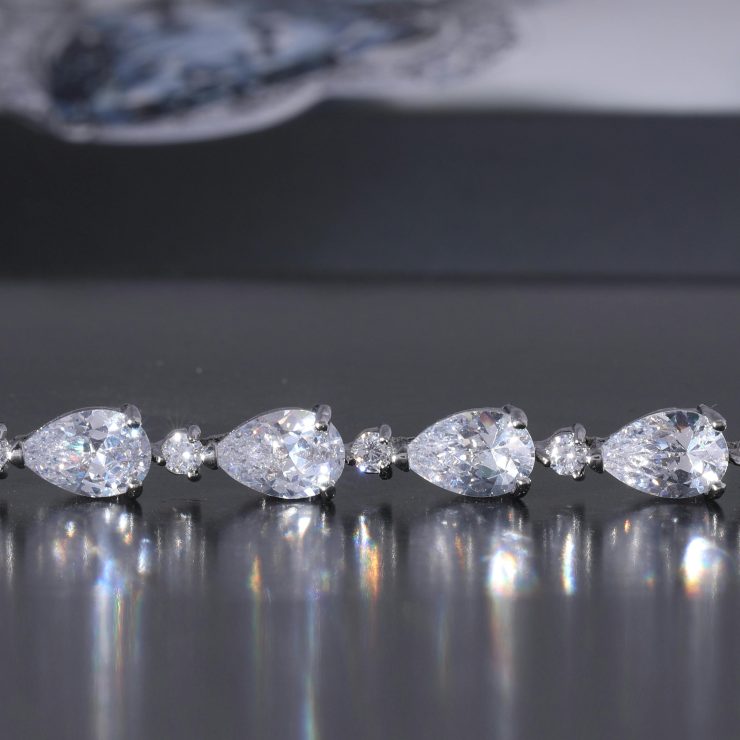Evaluating the worth of a diamond is not as straightforward as checking a standard price tag or referring to a single pricing chart. The diamond market is a highly nuanced space influenced by various factors, including economic trends, consumer demand, supply chain fluctuations, and evolving preferences such as the growing popularity of lab-grown diamonds. Unlike commodities like gold, which have a universal price per gram or ounce, diamonds vary significantly in price based on their unique characteristics and certification standards. Furthermore, global market conditions—such as economic recessions, inflation, or geopolitical instability—can either suppress or increase diamond prices. As such, setting realistic expectations about your diamond’s value requires more than a superficial understanding; it demands a detailed awareness of these influences in tandem with a personal assessment of the stone’s specific features.

The 4Cs: A Foundation for Individual Diamond Evaluation
At the core of any diamond valuation are the universally recognized 4Cs: Carat weight, Cut, Color, and Clarity. These four attributes work in tandem to establish the baseline value of a diamond. Carat weight refers to the physical weight of the diamond, and larger stones typically command higher prices. However, this factor alone is not determinative. Cut quality—how well the stone has been shaped and faceted—affects brilliance and visual appeal, which in turn influences buyer demand and pricing. Color grading, based on how colorless the diamond is, spans from D (completely colorless) to Z (light yellow or brown), with prices dropping significantly as one moves down the scale. Clarity assesses the presence of internal flaws (inclusions) or external blemishes, with higher clarity grades fetching premium prices. Understanding how your diamond scores in each category is essential for a grounded price expectation, and obtaining a professional appraisal or reviewing a GIA or AGS certification can provide concrete benchmarks for each C.
Certification and Documentation: Why Provenance Matters
One of the most important aspects affecting a diamond’s marketability and value is whether it is accompanied by credible documentation from a reputable gemological laboratory. Certifications from the Gemological Institute of America (GIA), American Gem Society (AGS), or the International Gemological Institute (IGI) offer a detailed breakdown of a diamond’s 4Cs, along with other identifiers like symmetry, polish, and fluorescence. These documents add significant credibility and transparency to the valuation process and are particularly crucial when selling to experienced buyers or on platforms that cater to a more educated clientele. In contrast, diamonds lacking proper certification are often discounted heavily because buyers must account for the risk of uncertainty. A certified diamond not only reassures potential buyers but also enables you to price the stone with more authority and accuracy, making it a vital component in setting a realistic price expectation.
Market Avenues and Price Variation: Retail, Wholesale, and Secondhand Markets
Where you intend to sell your diamond can drastically affect the price you can realistically expect to receive. The retail price a consumer pays for a diamond is often significantly higher than the price a seller receives in the secondary market. This disparity arises due to various markups added at the retail level, including marketing costs, showroom overhead, and brand premiums. If you are selling your diamond to a jeweler or a diamond dealer, you should expect to receive only a fraction—often 30% to 60%—of the original retail price, depending on market conditions and the desirability of your stone. Online platforms or auction sites may yield slightly better returns, especially if the diamond is rare, well-documented, or in high demand. Consignment sales through reputable jewelers may offer higher payouts but can take significantly longer. Understanding these avenues and their typical pricing dynamics helps prevent the disappointment that arises from unrealistic resale expectations.
Influence of Market Trends and Economic Factors
Broader economic forces play a substantial role in diamond pricing and resale potential. In times of economic prosperity, luxury goods such as diamonds often experience increased demand, which can elevate resale prices. Conversely, during economic downturns or inflationary periods, consumer demand for discretionary items like diamonds tends to fall, depressing prices and making it more challenging to sell at an advantageous rate. Additionally, cultural and technological shifts—such as the growing acceptance of lab-grown diamonds—can impact the value of natural diamonds, particularly those in the lower to mid-range of the quality spectrum. The increasing transparency brought on by online marketplaces and pricing tools has also made buyers more price-conscious and less willing to pay a premium unless a diamond truly stands out in terms of rarity or quality. As a seller, being aware of these macroeconomic and sociocultural trends enables a more informed, realistic pricing strategy that aligns with present-day market behavior.

Real-World Comparisons and Benchmarking: Using Online Tools and Price Charts
An effective way to assess your diamond’s worth in the current market is to compare it with similar stones that are actively being sold. Reputable online platforms such as Rapaport, Blue Nile, James Allen, and even eBay can serve as valuable references. The Rapaport Diamond Report, in particular, is widely regarded as an industry standard for wholesale pricing and is used by many jewelers to gauge price floors and ceilings. However, it’s crucial to note that Rapaport prices often represent the high end of the wholesale market, not what an individual seller is likely to receive. On consumer-facing platforms, you can narrow your search filters by the 4Cs to locate diamonds that closely resemble your own and analyze their listed prices. Pay attention to whether those stones are actually selling at the listed price or if there are frequent discounts and negotiations. While these benchmarks are not definitive, they provide a useful reference point and can help you avoid both underpricing and overestimating your diamond’s value.
The Role of Diamond Shape and Market Desirability
The shape of your diamond can significantly impact its market value and ease of resale. While round brilliant diamonds tend to hold value better due to their popularity and optimal light performance, fancy shapes such as pear, marquise, or heart cuts can vary widely in desirability depending on current fashion trends. Oval and cushion cuts have recently gained traction, but niche shapes often appeal to a more limited audience, which can reduce liquidity. Furthermore, certain shapes may hide inclusions better or appear larger than others of the same carat weight, affecting buyer perception and value. When evaluating your diamond, consider whether its shape aligns with current buyer preferences. You may find that even if the stone ranks high in carat, color, and clarity, a less popular shape could result in a slower or less profitable sale. Factoring in shape desirability allows for more accurate pricing and may influence your decision on where and how to market your diamond.
Emotional Value vs. Market Value: Separating Sentiment from Strategy
One of the most common obstacles in setting realistic price expectations is the tendency to overvalue a diamond due to emotional attachment. Engagement rings, heirlooms, or milestone gifts often carry immense sentimental weight, which can cloud judgment when it comes time to assess their financial value. Unfortunately, the market does not account for personal significance—only measurable characteristics and documented quality. It is crucial to distinguish between emotional and objective valuation to avoid disappointment or frustration during the selling process. Seeking third-party, professional appraisals and relying on factual data can help ground your expectations. It may also be helpful to mentally prepare for the possibility that your diamond will fetch less than its original purchase price, especially if it was bought at retail. Emotional separation not only improves pricing objectivity but also enhances your ability to negotiate and make strategic decisions about when and how to sell.
Preparing for Sale: Cleaning, Re-Certification, and Presentation
To maximize your diamond’s resale potential, proper preparation is essential. A clean, well-presented diamond often appears more brilliant and can make a stronger impression on buyers. Consider having the diamond professionally cleaned or polished to remove minor surface blemishes. If your diamond was certified more than five years ago or has changed hands without documentation, it may be beneficial to send it back to a reputable lab for re-certification. Updated certification reassures buyers and reflects current standards, which can make a difference in competitive markets. High-quality photographs, detailed descriptions, and disclosure of any known flaws or inclusions also contribute to buyer trust and may increase your chances of securing a favorable price. If selling online, clarity in listings and strong presentation are often just as important as the diamond’s inherent characteristics. These steps, while requiring minor upfront investment, can significantly enhance perceived value and help you align closer to your target price point.
Final Thoughts: Striking a Balance Between Value and Realism
Setting realistic price expectations when evaluating your diamond’s worth is a multi-dimensional process. It involves understanding the technical attributes of your stone, aligning them with current market trends, assessing sales platforms, and separating personal sentiment from economic value. By taking a data-driven and strategic approach—leveraging certification, market research, professional appraisals, and clear presentation—you can create a more accurate picture of what your diamond is truly worth today. While it may be difficult to reconcile purchase prices or emotional attachment with current market realities, approaching the valuation process with a clear, informed mindset enables more effective decision-making and increases the likelihood of a successful sale.